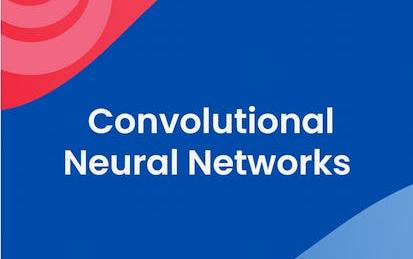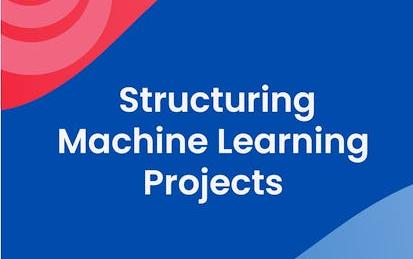

Our Courses

Let’s Read! Learning Japanese through Science & Technology-1
東京大学の研究内容に基づく科学技術に関する文章を読み、基礎的な日本語の専門語彙や重要な表現の使い方を習得しながら、読解力を向上することができる。また、読解学習にとどまらず、テキスト動画やインタビュー動画を利用し、「聴く」、「話す」、「書く」といった連繫した力を養うことができる。さらに、理工学系の知識を発展的に広げ、深めることができる。 教材は、日本語教育の専門教員が作成したテキストや動画に加え、理系の専門教員にインタビューした動画を含む。それを内容重視アプローチ(content-based learning)を利用し、効率的に学ぶことができる。また、内容重視アプローチは学習者のモチベーションを上げ、中級のレベルではあるが、アカデミックな語彙を含むより高いレベルの語学力を身に付けることができる。 This course focuses on improving Japanese reading comprehension through vocabulary and expressions retention, with a theme of Science and Engineering research at the University of Tokyo.
-
Course by

-
 Self Paced
Self Paced
-
 Japanese
Japanese

商管研究中的賽局分析(二):資訊經濟學 (Game Theoretic Analysis for Business Research (2))
延續本系列的第一門課「商管研究中的賽局分析」,本課程將繼續介紹如何利用賽局理論的模型與均衡分析探討商管領域中的各種議題。本課程將圍繞著「資訊」展開,介紹資訊不對稱的基本類別、如何將資訊不對稱納入模型中、模型求解的基本概念,以及應用案例。學完本課程的同學將具有對商管環境中的資訊不對稱議題進行理論研究的基本能力。
-
Course by

-
 Self Paced
Self Paced
-
 Chinese
Chinese

社会调查与研究方法 (下)Methodologies in Social Research (Part 2)
社会调查与研究方法, 首先,是一套观察社会现象、测量社会现象的工具; 其次,是一套分析和运用社会现象数据的科学方法; 最高境界,则是一套针对社会、经济、教育、政治、法律、管理、公共卫生、新闻报道等人类的生产与生活现象,进行科学沟通的思维逻辑与表达方式。
-
Course by

-
 Self Paced
Self Paced
-
 Chinese
Chinese

Blockchain Para a Empresa
Blockchain se posiciona na transformação de toda a indústria e das funções administrativas - redefinindo a maneira como transacionamos online, compartilhamos ideias e gerenciamos fluxos de trabalhos. É a nova tecnologia que todos os profissionais de negócios precisam entender. Esta especialização te introduz ao mundo da tecnologia Blockchain - explicando o que é, como funciona e porque é revolucionária. Você aprenderá diversas categorias de criptoativos e as formas que podem ser transacionados.
-
Course by

-
 Self Paced
Self Paced
-
 Portuguese
Portuguese

Qualitative Research Methods
In this course you will be introduced to the basic ideas behind the qualitative research in social science. You will learn about data collection, description, analysis and interpretation in qualitative research. Qualitative research often involves an iterative process.
-
Course by

-
 Self Paced
Self Paced
-
 24 hours
24 hours
-
 English
English

How to Create a Good Business
Prioritizing the wellbeing of workers is not just a good - or ethical - thing to do, but because it makes business sense. A happier, healthier workforce is a more productive workforce.
-
Course by

-
 Self Paced
Self Paced
-
 23 hours
23 hours
-
 English
English

The Economics of AI
The course introduces you to cutting-edge research in the economics of AI and the implications for economic growth and labor markets. We start by analyzing the nature of intelligence and information theory. Then we connect our analysis to modeling production and technological change in economics, and how these processes are affected by AI. Next we turn to how technological change drives aggregate economic growth, covering a range of scenarios including a potential growth singularity.
-
Course by

-
 Self Paced
Self Paced
-
 28 hours
28 hours
-
 English
English

Reproducible Research
This course focuses on the concepts and tools behind reporting modern data analyses in a reproducible manner. Reproducible research is the idea that data analyses, and more generally, scientific claims, are published with their data and software code so that others may verify the findings and build upon them. The need for reproducibility is increasing dramatically as data analyses become more complex, involving larger datasets and more sophisticated computations.
-
Course by

-
 Self Paced
Self Paced
-
 8 hours
8 hours
-
 English
English

Identifying Social Entrepreneurship Opportunities
This Course will clarify the definition and meaning of Social Entrepreneurship and will focus on the need to learn about the source and root of a social problem. You will be introduced to different perspectives about Social Entrepreneurship and you will learn about complementary and opportunistic assets which will help you to detect an opportunity and develop an idea of how to create a business for social change.
-
Course by

-
 Self Paced
Self Paced
-
 25 hours
25 hours
-
 English
English

Major Engineering Project Performance
Manage large projects by identifying their key characteristics, examining the key factors and risks that affect their performance and exploring methods to counter their impact on the successful delivery of projects. Looking into examples of best practice, you'll explore the relationship between projects, programmes and portfolios. You'll also discover the roles performed by the project manager, examine the difficulties associated with quantifying transaction costs in major project management and consider how different management approaches impact on these costs.
-
Course by

-
 Self Paced
Self Paced
-
 19 hours
19 hours
-
 English
English

Design a User Experience for Social Good & Prepare for Jobs
Design a User Experience for Social Good and Prepare for Jobs is the seventh and final course in a program that will equip you with the skills you need to become an entry-level UX designer. In this course, you will design a dedicated mobile app and a responsive website focused on social good. You will showcase all that you’ve learned during the certificate program to complete the design process from beginning to end: empathizing with users, defining their pain points, coming up with ideas for design solutions, creating wireframes and prototypes, and testing designs to get feedback.
-
Course by

-
 Self Paced
Self Paced
-
 87 hours
87 hours
-
 English
English
Toxicology 21: Scientific Applications
This course familiarizes students with the novel concepts being used to revamp regulatory toxicology in response to a breakthrough National Research Council Report “Toxicity Testing in the 21st Century: A Vision and a Strategy.” We present the latest developments in the field of toxicology—the shift from animal testing toward human relevant, high content, high-throughput integrative testing strategies. Active programs from EPA, NIH, and the global scientific community illustrate the dynamics of safety sciences.
-
Course by

-
 Self Paced
Self Paced
-
 96 hours
96 hours
-
 English
English

Network Security & Database Vulnerabilities
This course gives you the background needed to understand basic network security. You will learn the about Local Area Networks, TCP/IP, the OSI Framework and routing basics. You will learn how networking affects security systems within an organization. You will learn the network components that guard an organization from cybersecurity attacks.\n\nIn addition to networking, you will learn about database vulnerabilities and the tools/knowledge needed to research a database vulnerability for a variety of databases including SQL Injection, Oracle, Mongo and Couch.
-
Course by

-
 Self Paced
Self Paced
-
 15 hours
15 hours
-
 English
English

Create High-Fidelity Designs and Prototypes in Figma
Create High-Fidelity Designs and Prototypes in Figma is the fifth course in a certificate program that will equip you with the skills you need to apply to entry-level jobs in user experience (UX) design. In this course, you will follow step-by-step tutorials to learn how to create high-fidelity designs, called mockups, in Figma, a popular design tool. Then, you’ll turn those designs into an interactive prototype that works like a finished product. You’ll conduct research to collect feedback about your designs and make improvements.
-
Course by

-
 Self Paced
Self Paced
-
 69 hours
69 hours
-
 English
English

Business English: Marketing and Sales
If you work in marketing, sales, or advertising, you already know that effective communication is a requirement. This can be even more difficult when expressing your ideas in a persuasive manner in English. In this course, you will learn to use English more efficiently while joining successful global professionals around the world. Develop your skills along with authentic characters that work in marketing and also work hard to improve their communication skills. Learn from your successes and failures, reflect on your own style, strengths, and improvement areas.
-
Course by

-
 Self Paced
Self Paced
-
 32 hours
32 hours
-
 English
English

Build Wireframes and Low-Fidelity Prototypes
Build Wireframes and Low-Fidelity Prototypes is the third course in a certificate program that will equip you with the skills you need to apply to entry-level jobs in user experience (UX) design. In this course, you’ll continue to design a mobile app for your professional UX portfolio. You’ll start by creating storyboards and getting familiar with the basics of drawing. Then, you'll create paper wireframes and digital wireframes using the design tool Figma. You’ll also create a paper prototype and a digital low-fidelity prototype in Figma.
-
Course by

-
 Self Paced
Self Paced
-
 41 hours
41 hours
-
 English
English

Big Data, Artificial Intelligence, and Ethics
This course gives you context and first-hand experience with the two major catalyzers of the computational science revolution: big data and artificial intelligence. With more than 99% of all mediated information in digital format and with 98% of the world population using digital technology, humanity produces an impressive digital footprint. In theory, this provides unprecedented opportunities to understand and shape society. In practice, the only way this information deluge can be processed is through using the same digital technologies that produced it.
-
Course by

-
 Self Paced
Self Paced
-
 12 hours
12 hours
-
 English
English

Conduct UX Research and Test Early Concepts
Conduct UX Research and Test Early Concepts is the fourth course in a certificate program that will equip you with the skills you need to apply to entry-level jobs in user experience (UX) design. In this course, you will learn how to plan and conduct a usability study to gather feedback about designs. Then, you will modify your low-fidelity designs based on insights from your research. Current UX designers and researchers at Google will serve as your instructors, and you will complete hands-on activities that simulate real-world UX design scenarios.
-
Course by

-
 Self Paced
Self Paced
-
 45 hours
45 hours
-
 English
English

Introduction to Systematic Review and Meta-Analysis
We will introduce methods to perform systematic reviews and meta-analysis of clinical trials. We will cover how to formulate an answerable research question, define inclusion and exclusion criteria, search for the evidence, extract data, assess the risk of bias in clinical trials, and perform a meta-analysis.
-
Course by

-
 Self Paced
Self Paced
-
 14 hours
14 hours
-
 English
English

Natural Language Processing with Attention Models
In Course 4 of the Natural Language Processing Specialization, you will: a) Translate complete English sentences into Portuguese using an encoder-decoder attention model, b) Build a Transformer model to summarize text, c) Use T5 and BERT models to perform question-answering. By the end of this Specialization, you will have designed NLP applications that perform question-answering and sentiment analysis, and created tools to translate languages and summarize text! Learners should have a working knowledge of machine learning, intermediate Python including experience with a deep learning fra
-
Course by

-
 Self Paced
Self Paced
-
 35 hours
35 hours
-
 English
English

Summary Statistics in Public Health
Biostatistics is the application of statistical reasoning to the life sciences, and it is the key to unlocking the data gathered by researchers and the evidence presented in the scientific literature. In this course, we'll focus on the use of statistical measurement methods within the world of public health research. Along the way, you'll be introduced to a variety of methods and measures, and you'll practice interpreting data and performing calculations on real data from published studies.
-
Course by

-
 Self Paced
Self Paced
-
 15 hours
15 hours
-
 English
English

Data Pipelines with TensorFlow Data Services
Bringing a machine learning model into the real world involves a lot more than just modeling.
-
Course by

-
 Self Paced
Self Paced
-
 12 hours
12 hours
-
 English
English

Sports and Building Aerodynamics
COURSE ABSTRACT: \nHave we reached the boundaries of what can be achieved in sports and building design? The answer is definitely “NO”. This course explains basic aspects of bluff body aerodynamics, wind tunnel testing and Computational Fluid Dynamics (CFD) simulations with application to sports and building aerodynamics. It is intended for anyone with a strong interest in these topics. Key fields addressed are urban physics, wind engineering and sports aerodynamics.\n\nCOURSE CONTENTS:\nThe course consists of 6 weeks.
-
Course by

-
 Self Paced
Self Paced
-
 24 hours
24 hours
-
 English
English

Excel Basics for Data Analysis
Spreadsheet tools like Excel are an essential tool for working with data - whether for data analytics, business, marketing, or research. This course is designed to give you a basic working knowledge of Excel and how to use it for analyzing data. This course is suitable for those who are interested in pursuing a career in data analysis or data science, as well as anyone looking to use Excel for data analysis in their own domain.
-
Course by

-
 Self Paced
Self Paced
-
 12 hours
12 hours
-
 English
English

Natural Language Processing with Classification and Vector Spaces
In Course 1 of the Natural Language Processing Specialization, you will: a) Perform sentiment analysis of tweets using logistic regression and then naïve Bayes, b) Use vector space models to discover relationships between words and use PCA to reduce the dimensionality of the vector space and visualize those relationships, and c) Write a simple English to French translation algorithm using pre-computed word embeddings and locality-sensitive hashing to relate words via approximate k-nearest neighbor search.
-
Course by

-
 Self Paced
Self Paced
-
 33 hours
33 hours
-
 English
English



